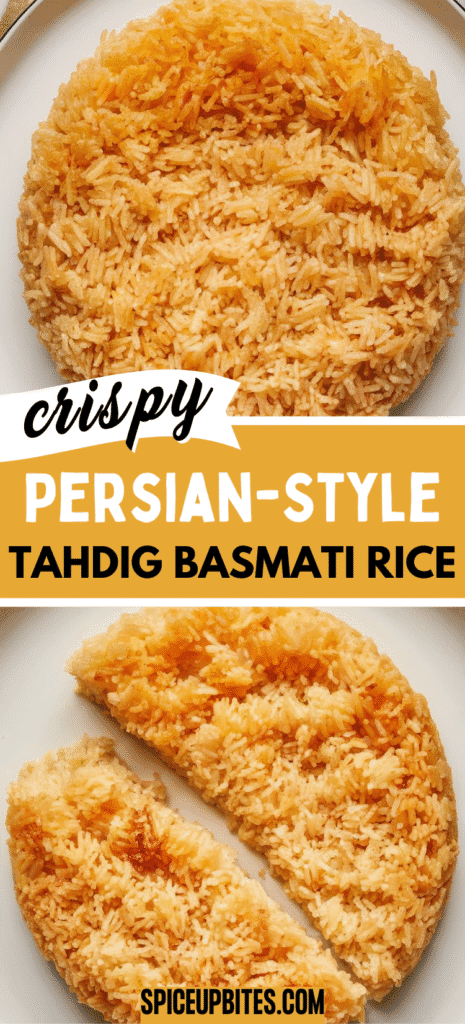Golden, buttery, crispy-bottomed rice you’ll crave again and again
A Warm Hello!
There is nothing quite like breaking into the crispy, golden crust of Persian-style tahdig rice. It’s a little fancy, but simple enough once you learn the steps.
The best part? That buttery, saffron-kissed crust. It’s a showstopper on any table.
Why I Love This Recipe
I first learned how to make tahdig from a Persian family friend who would serve it at Sunday dinners. When they flipped the rice onto a platter, everyone clapped.
Here’s what I love about this recipe:
- You get both fluffy and crispy textures in one dish.
- The saffron and butter make the whole kitchen smell incredible.
- It’s perfect for special dinners but easy enough for a weekend lunch.
- It teaches patience in cooking—and rewards you with a golden crust.
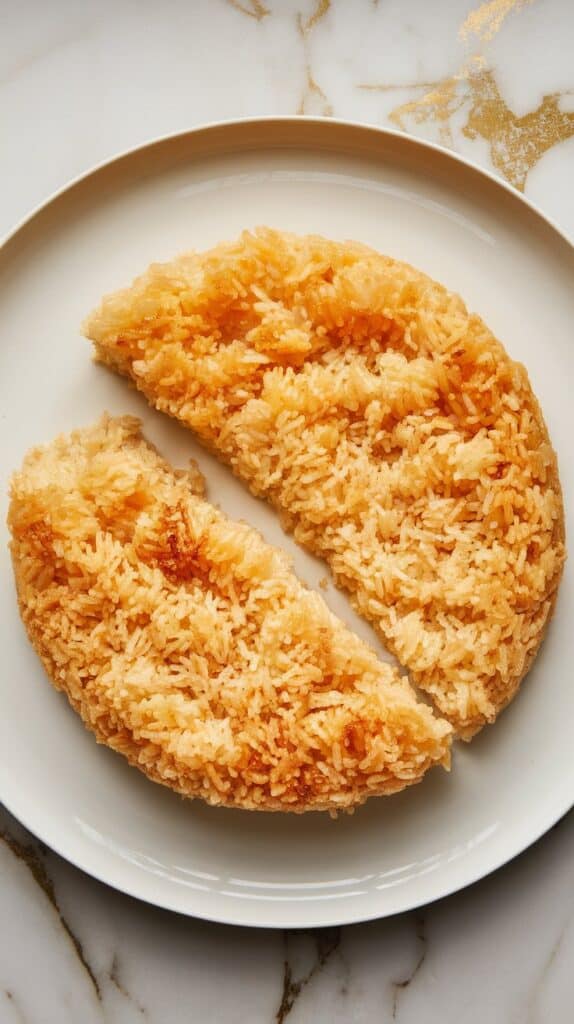
What You’ll Need
Ingredients:
- 2 cups basmati rice, rinsed until water runs clear
- 4 cups water
- 2 tablespoons kosher salt (for boiling water)
- 3 tablespoons unsalted butter, melted
- 2 tablespoons neutral oil (like canola or grapeseed)
- 1/4 teaspoon saffron threads, bloomed in 2 tablespoons hot water
- 1/4 teaspoon ground turmeric (optional, for color)
- 2 tablespoons plain whole milk yogurt (for the crust, optional but recommended)
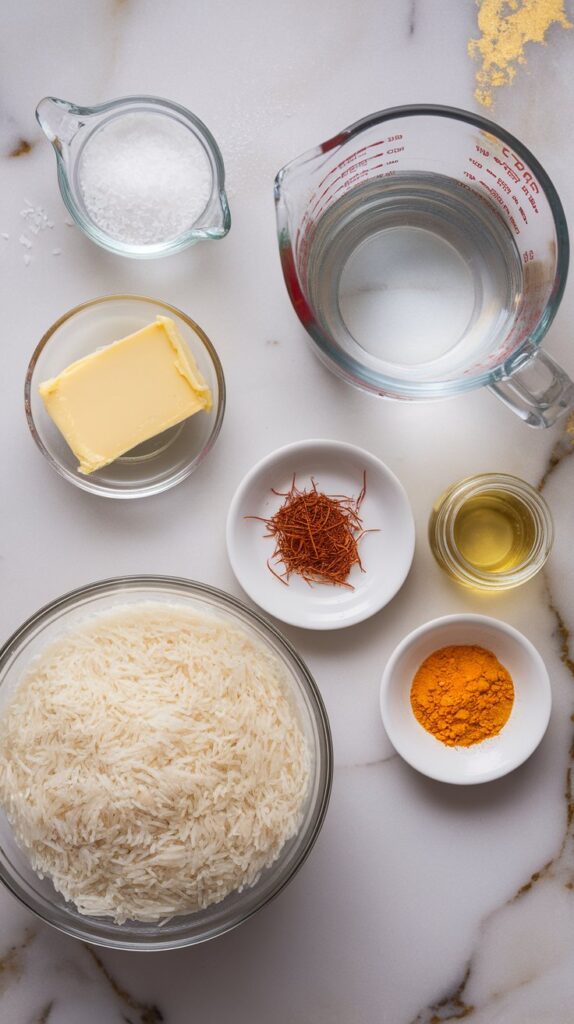
What You’ll Need Image Prompt:
Ultra close-up, top-down image of a white marble countertop with hints of gold showing:
- 2 cups rinsed basmati rice in a glass bowl (rice grains slightly wet),
- a measuring cup with 4 cups water,
- small dish with 2 tablespoons kosher salt,
- small bowl of melted unsalted butter (golden yellow),
- small glass ramekin of neutral oil,
- tiny bowl of saffron threads steeped in 2 tbsp hot water (deep orange-red liquid),
- pinch of turmeric powder in a small white dish.
With all-natural lighting, taken with an iPhone 15 Pro, top-down shot used by recipe bloggers.
Pro Tips
- Always rinse your rice until the water runs clear—it removes the starch so your rice stays fluffy.
- Let the tahdig cook low and slow; don’t rush the crust or it won’t crisp properly.
- Bloom the saffron in hot water ahead of time so it releases more color and flavor.
- Use a non-stick pan or a well-seasoned stainless steel skillet to help the crust release cleanly.
- Don’t lift the lid too often—trap that steam to cook the top rice.
Tools You’ll Need
- Large non-stick or stainless steel skillet with a tight-fitting lid
- Medium saucepan (for parboiling rice)
- Fine-mesh sieve
- Measuring cups & spoons
- Small bowls for melted butter, saffron, and oil
- Silicone spatula
Substitutions and Variations
- Swap basmati rice for jasmine rice, though the flavor and texture will be slightly different.
- Use ghee instead of butter for a nuttier flavor.
- Add a thin layer of thinly sliced potatoes on the bottom for a potato tahdig variation.
- Leave out the saffron if you can’t find it—use turmeric for color instead.
Make Ahead Tips
- You can rinse and soak your rice up to a day in advance. Keep it covered in the fridge until ready to use.
- Bloom the saffron in hot water and store it covered at room temp for a few hours.
Servings & Cook Time
Servings: 4–6 people
Total Time: 50 minutes (including prep and resting)
Why This Recipe Works (Quick Science)
- Parboiling the rice: gets it partially cooked so it won’t steam too long and turn mushy later.
- Oil + butter fat: helps the bottom crisp up evenly without burning.
- Low heat and trapped steam: cook the inside gently while crisping the outside, creating that signature crunchy crust.
Meal Plan Ideas
- Pair with grilled chicken thighs or lamb kebabs.
- Add cucumber yogurt salad for something cooling.
- Serve alongside roasted eggplant or tomato stew for a vegetarian meal.
Common Mistakes
- Skipping the rice rinse = gummy, sticky rice.
- Too much heat = burnt bottom, not crispy.
- Lifting the lid too often = unevenly cooked rice.
- Not enough oil or butter = dry, stuck-on crust.
What to Serve With
- Grilled meats (chicken, lamb, beef)
- Persian cucumber and tomato salad (Shirazi salad)
- Yogurt with mint
- Eggplant stew (Khoresht Bademjan)
- Lemon wedges on the side
FAQ
Q: Can I use brown rice?
A: Not for this one—brown rice needs a different cooking time and won’t crisp the same way.
Q: What’s the easiest way to flip it out of the pan?
A: Place a big flat plate over the pan and flip quickly and confidently.
Q: Can I use only butter or only oil?
A: You can, but the combo gives you the best flavor and crispness.
Q: What if my crust sticks?
A: Let the pan cool for a few minutes before trying again. Sometimes steam helps release it.
How to Make Persian-Style Tahdig Rice
Step 1: Rinse the Rice
Rinse the basmati rice under cold water until the water runs clear, about 3 to 4 rinses. This removes the extra starch.
Step 2: Parboil the Rice
Bring 4 cups of water and 2 tablespoons of kosher salt to a boil in a medium saucepan. Add the rinsed rice and boil for 6–7 minutes until the rice is just tender but still has a bite. Drain the rice in a fine-mesh sieve.
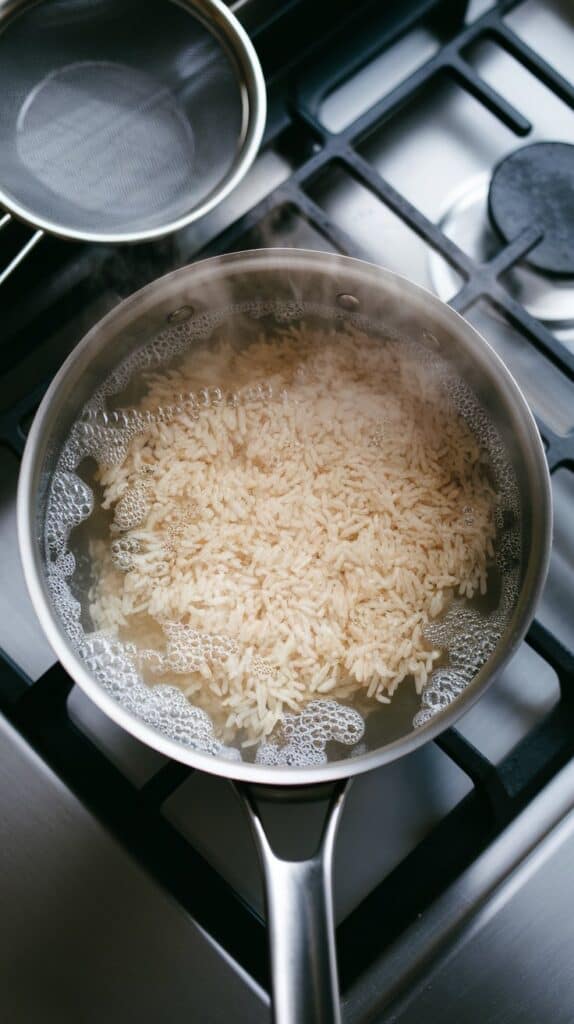
Step 3: Bloom the Saffron
While the rice drains, stir the saffron threads into 2 tablespoons hot water. Let sit for 5 minutes until it turns a deep golden-orange.
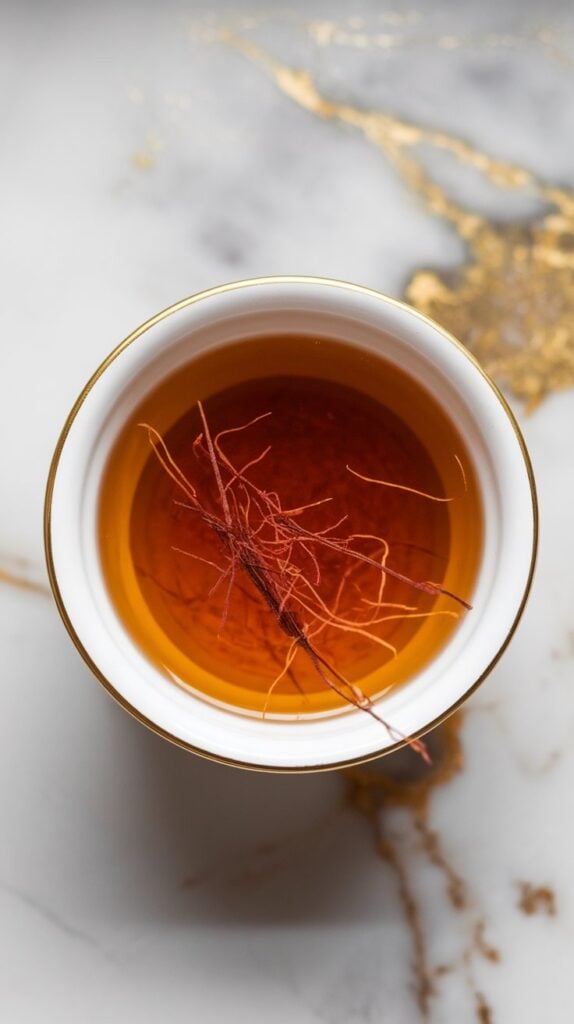
Step 4: Prepare the Bottom Layer for a Deep Golden Crust
In your non-stick skillet, heat 2 tablespoons melted butter + 1 tablespoon neutral oil over medium heat. Swirl to coat the pan.
In a small bowl, combine 1 cup of the parboiled rice with 2 tablespoons yogurt, 2 tablespoons saffron water, and ½ teaspoon turmeric. Stir well.
Spread this rice-yogurt-saffron mixture evenly over the bottom of the pan and press gently with a spatula.
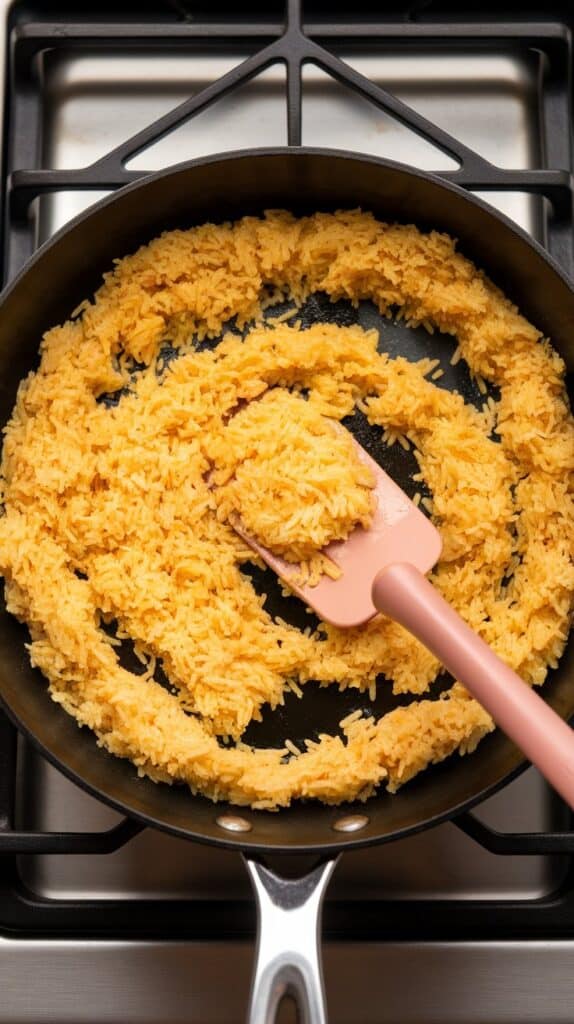
Step 5: Add the Remaining Rice
Gently mound the rest of the rice on top. Drizzle the remaining saffron water and melted butter over the top. Cover the pan with a clean kitchen towel and lid (wrap the lid so steam doesn’t drip back into the rice).
Step 6: Steam and Crisp the Tahdig
Cook over medium heat for 8–10 minutes until you hear a gentle sizzle. Then reduce to low heat and steam for 25–30 minutes, or until the bottom crust is golden and crispy. Don’t lift the lid too often!
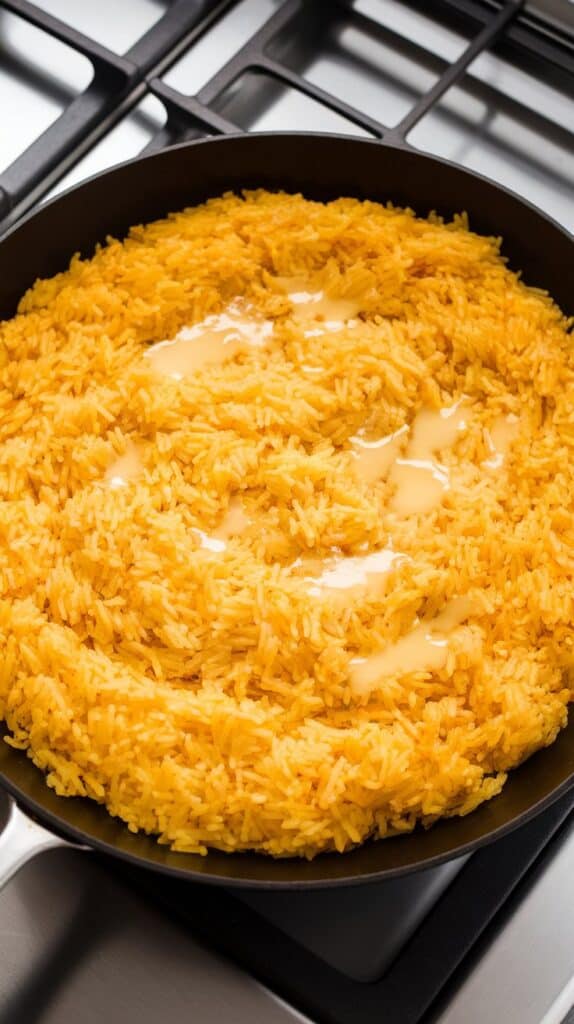
Step 7: Flip and Serve
Remove the pan from heat and let it rest for 5 minutes. Place a platter over the pan and flip quickly to release the rice in one beautiful golden round.
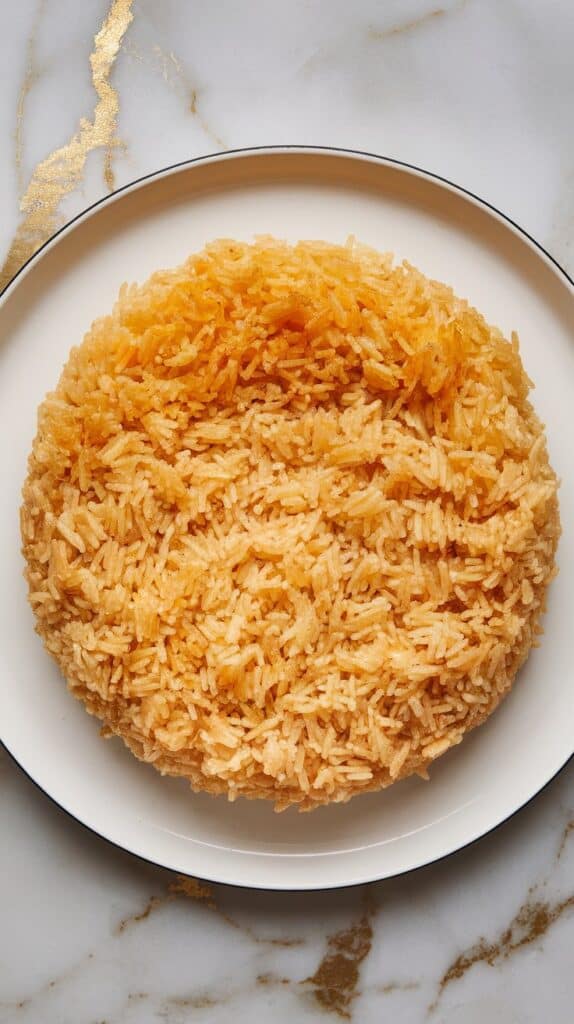
Leftovers & Storage
Store leftover rice in an airtight container in the fridge for up to 3 days.
Re-crisp leftovers in a non-stick pan over low heat with a little oil to bring back the crunch.
Go Make It!
Give this tahdig a try and let me know how it turns out! Did your crust come out golden and crisp? Leave a comment below with your thoughts or any questions—I love hearing how your kitchen adventures turn out.
